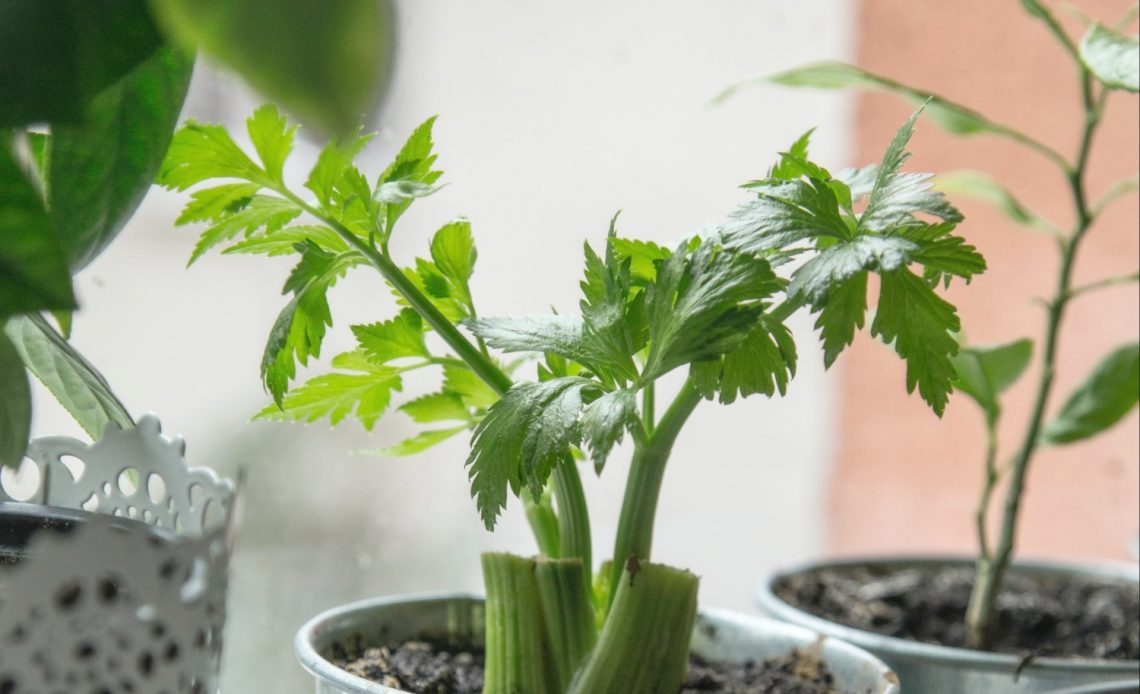

We’re here to help! Wild Yards is a completely free website that is 100% dedicated to helping you create a wildlife-friendly, sustainable yard. Read more
WildYards is reader-supported. When you buy a product through a link on our site, we may earn a comission. Every product is independently selected by our (obsessive) editors and our reviews are unbiased and objective. Read more about our mission or our privacy policy.
Once you’ve tasted fresh vegetables grown from your own backyard garden, it spoils you. It can be tough going back to supermarket produce, even when everything freezes over during the winter. Fortunately, by switching to containers, you can continue to grow vegetables in cold temperatures. But what are the best winter vegetables to grow in pots, and how can you care for them to ensure they produce a crop worth harvesting?
Carrots, beets, spinach, and bok choy grow just as well in containers as they do in the ground. These vegetables, along with celery, cauliflower, broccoli rabe, collard greens, and potatoes, are tolerant of colder temperatures. When cared for properly, these plants will give you plenty to harvest from your winter garden.
What’s the best way to grow vegetables in the winter?
It’s just not possible to grow a vegetable garden in the ground that’s frozen solid. And even if you live in a temperate climate, winter weather can be unpredictable. Just because your local weather stays warmer compared to other parts of the country, that doesn’t necessarily mean that you won’t get any freezes. And one good freeze is all it takes to kill a garden.
The best way to grow vegetables in the winter is to plant them in large pots. That way, you can carry them outside when the weather is warm enough, and move them indoors when the mercury starts to drop and the environment becomes less hospitable. Keeping your winter vegetables in pots also allows you to tend to their individual needs more efficiently. Some plants require more water than others. Plants also have different nutritional needs, and by keeping them in pots, you’ll have a much easier time amending each plant’s soil as necessary.
Pots should be medium to large in size. Some plants require more space than others, but 1 to 3-gallon pots should work fine. If you can’t track down enough large pots for your winter garden, visit your local hardware store to pick up some 5-gallon buckets. You can easily drill drainage holes into the bottoms of them, and they have handles, making them easier to transport than regular pots.
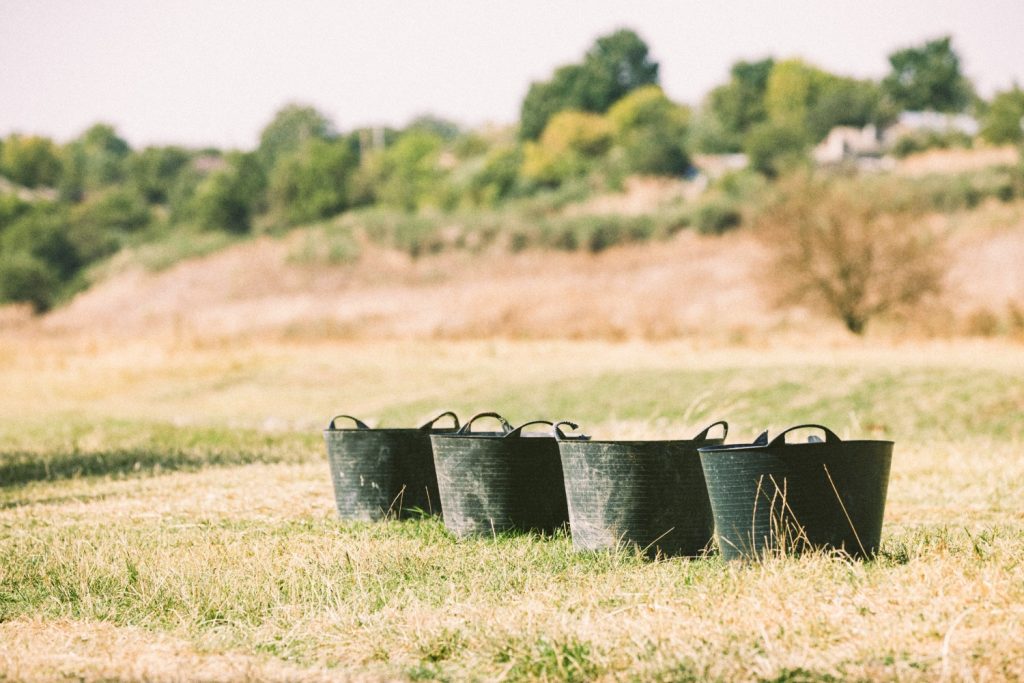
What’s the best soil to use to fill the pots?
Most garden vegetables grow well in neutral soil. So to help your plants get started on the right foot, fill their pots with our soil recipe for raised beds. This blend offers the best pH for nutrient absorption for plants across the board. It’s also amended to improve drainage while retaining just the right amount of moisture to keep plants hydrated. Adding straw or woodchips for mulch helps the soil stay moist, and acts as insulation to keep the plants warm.
When should you start your seedlings so they’re ready for winter?
In general, you should start your seedlings indoors in midsummer to early fall. You can grow your seedlings in seed trays or in biodegradable peat seed pots, which are easier to work with when it comes time to transplant them. Keep your seedlings warm by placing them directly under a grow light. And by “directly under” we mean just that. Seedlings should be only an inch or so away from the light. This helps grow sturdier plants that aren’t as leggy and spindly as those grown farther from a light source.
It’s best to raise the lights and/or lower the seedlings as they grow. Once your seedlings have developed 2 or 3 true leaves, which take the shape of their adult leaves, they’re ready to be transplanted to their pots. Be careful when handling seedlings. If they sustain much damage to their roots or foliage, they may not be able to overcome the colder temperatures.
What are the best winter vegetables to grow in pots?
Before you start your seedlings, you’ve got to know which seeds to sow. There are a number of plants that can be grown in winter, but some are easier than others. Here are the 9 best winter vegetables to grow in pots to make sure you’ve got plenty of fresh produce to enjoy this winter.
Carrots
Carrots are big tap roots. They don’t grow out very much, either above ground or below it. They just grow straight down, and this means a few things. First, it means they need to be planted in pots that are deep enough that they allow for good growth. Planted in shallow pots, your carrots won’t reach their maximum potential. Second, your carrots need loose soil. Compacted soils, especially clay-rich soils or those full of rocks, twigs, and other debris, will hinder development. Lastly, because their growth is fixated directly beneath them, it means you can plant multiple carrots in the same pot.
You can start your carrot seedlings inside in late summer to be moved to pots later, or you can sow the seeds straight in the pots. Place seeds ¼-inch deep in the soil, being sure to leave about an inch of space on all sides. This will give the plants enough space to root out properly. Because carrots are moderate to heavy nutrient users, you’ll need to amend your potting soil with an extra dose of compost. Carrots are ready to be harvested in about 75 days, and you can save the tops to use in salads and soups. Try growing rainbow carrots in your winter garden for a dash of vibrant color.
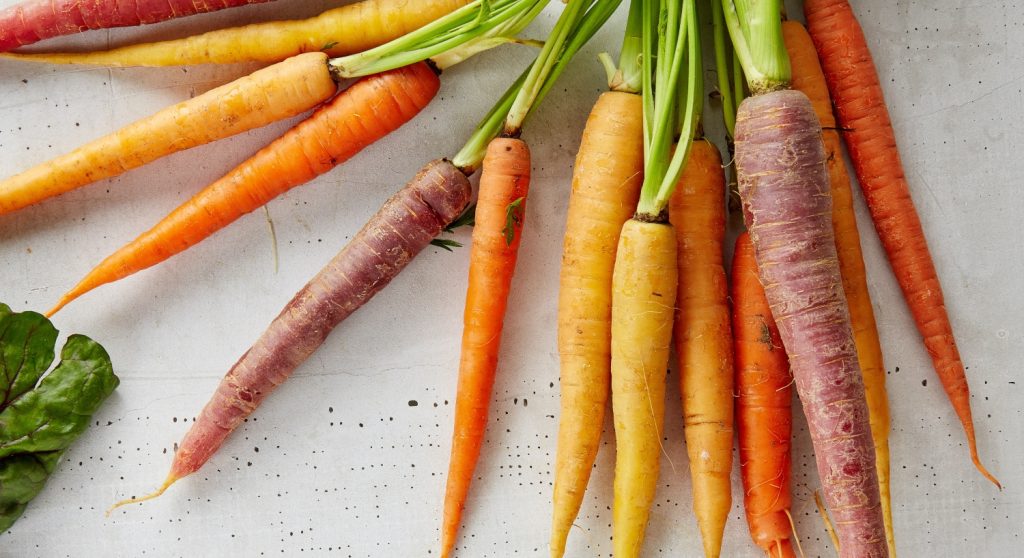
Spinach
You can sow your spinach seeds in the fall and even in the early winter months. As long as the temperatures are at 50 degrees Fahrenheit, the seeds will germinate. Spinach is one of the cold-hardiest garden vegetables around, so it’s perfect for growing in winter container gardens. Additionally, because this crop matures so quickly (in just 30 to 45 days) it’s possible to get several crops of spinach between fall and spring — especially if you simply trim the leaves and leave the roots, allowing the plant to regrow.
Spinach seedlings can be difficult to transplant, so for best results, you should start the seeds in their permanent pot. Sow the seeds ½-inch deep. Once they sprout, thin them out leaving 2 to 4 inches of space between plants. Start your seeds in September or October, before the darkest days of winter, also called “Persephone Days” after the Greek goddess of the underworld.
Spinach plants love nitrogen, and the more they have available to them, the better they’ll grow. So before planting, amend your soil with a little blood meal to enhance the levels of this valuable mineral. Be sure to water your spinach plants regularly, as these leafy greens require lots of moisture to grow well.
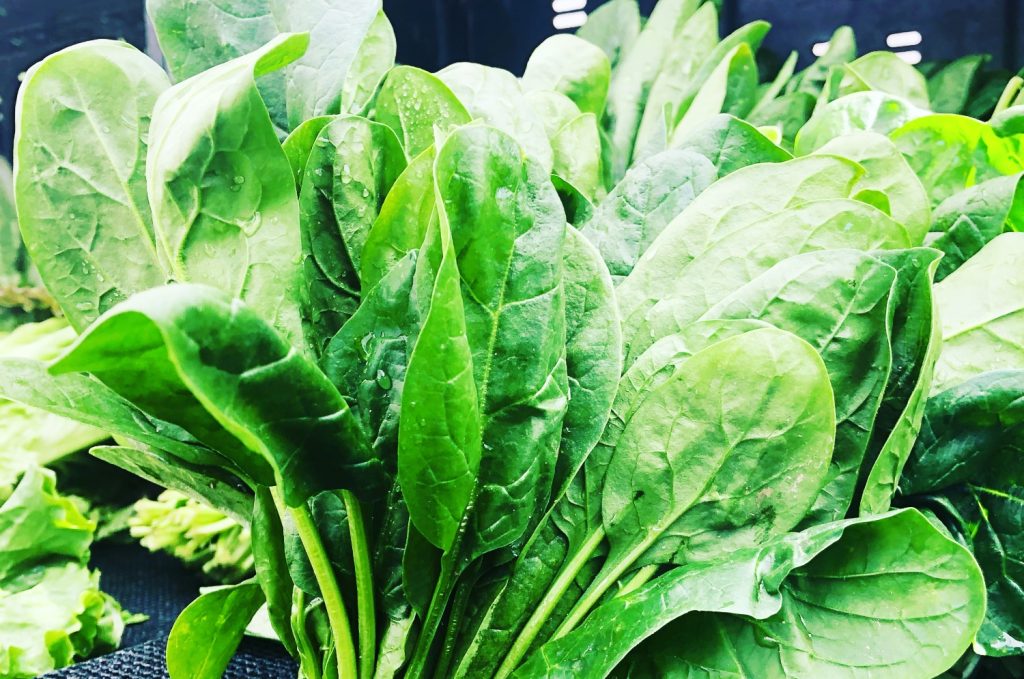
Cauliflower
Not only are cauliflowers cold tolerant, they actually prefer cooler temperatures. When the temperatures are above 75 degrees Fahrenheit, cauliflowers struggle to produce. They grow best between 50 and 60 degrees, so they’re an ideal choice for winter gardens. You can grow a single cauliflower plant in a 3-gallon pot. Because these plants have shallow roots, they don’t need deep containers. If you use storage containers instead of buckets, you can grow several cauliflowers at a time.
Start your cauliflower seeds indoors in peat seed pots 6 to 8 weeks before the final frost of the season. Sow the seeds ¼-inch deep and transplant them to their permanent containers once they develop a pair of true leaves. Remember to handle the seedlings carefully during the transplanting process.
Once settled in their new home, be sure to keep the cauliflowers hydrated. Check the soil regularly and when it feels dry to the touch, give them a sip of water. Dry soils leave cauliflower heads tasting bitter. If you find your cauliflowers are drying out too quickly between waterings, try adding a layer of mulch to help the soil retain moisture.
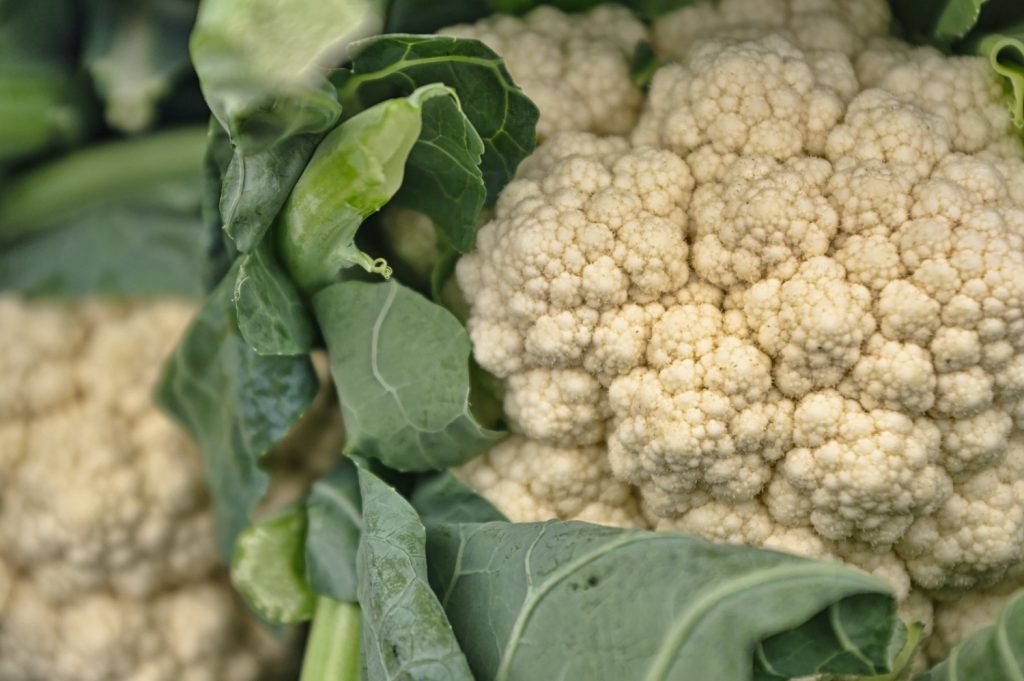
Broccoli rabe
Producing smaller florets than traditional broccoli plants, broccoli rabe is ideal for container gardening, especially in winter. Because the seeds are so tiny, it’s best to sow them directly into their large pots and thin them out later once they’ve sprouted. Sow the seeds about ¼-inch deep, and leave 4 to 6 inches between individual plants. Broccoli rabe is ready to be harvested in 6 to 8 weeks, so sow their seeds around 6 weeks before the first frost of the season.
Broccoli rabe doesn’t require a ton of nutrients to grow, so there’s no need to fertilize excessively. A heaping handful of compost mixed well into their potting soil should be more than enough to see them through. Keep the soil moist but not sopping wet for your broccoli rabe plants, and be sure to provide them with plenty of sunlight as the temperatures drop. While broccoli rabe can be grown in the shade, it’s best to keep them where they’ll stay as warm as possible during the colder weather.
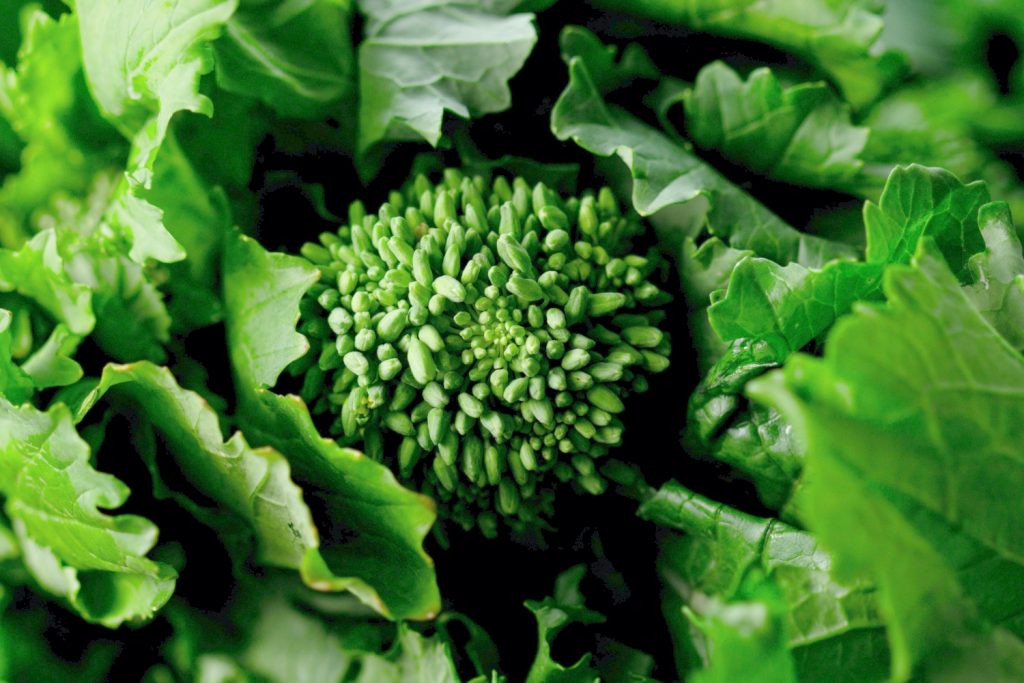
Celery
Growing celery is not for the faint of heart. It’s a long, drawn-out process that takes anywhere between 90 and 130 days. While the plants themselves are easy enough to care for, they require scheduled waterings, adequate fertilization, and a special blanching process to seal in flavor before they’re ready to be eaten. But, to be fair, homegrown celery is much tastier than storebought. And because this is one of the few vegetables that can tolerate cold temperatures, it deserves a spot in your winter container garden.
Sow your celery seeds straight in the pot 6 to 8 weeks before the first frost of the season about ⅛-inch to ¼-inch deep in the soil. Once the seeds have sprouted, thin them out leaving 6 to 10 inches between plants. Celery grows very well in rows rather than in circular pots. So, as with cauliflower, consider growing your celery crop in a long storage container.
Once your celery has matured, you’ll need to blanch it. Blanching limits the celery’s exposure to sunlight keeping the stalks as pale as possible, which has a tremendous impact on the taste. About 3 weeks before your celery crop is ripe, wrap each plant in sheets of newspaper using a rubberband to keep them in place. This keeps the celery sweeter and crisper, so it tastes better than store-bought alternatives.
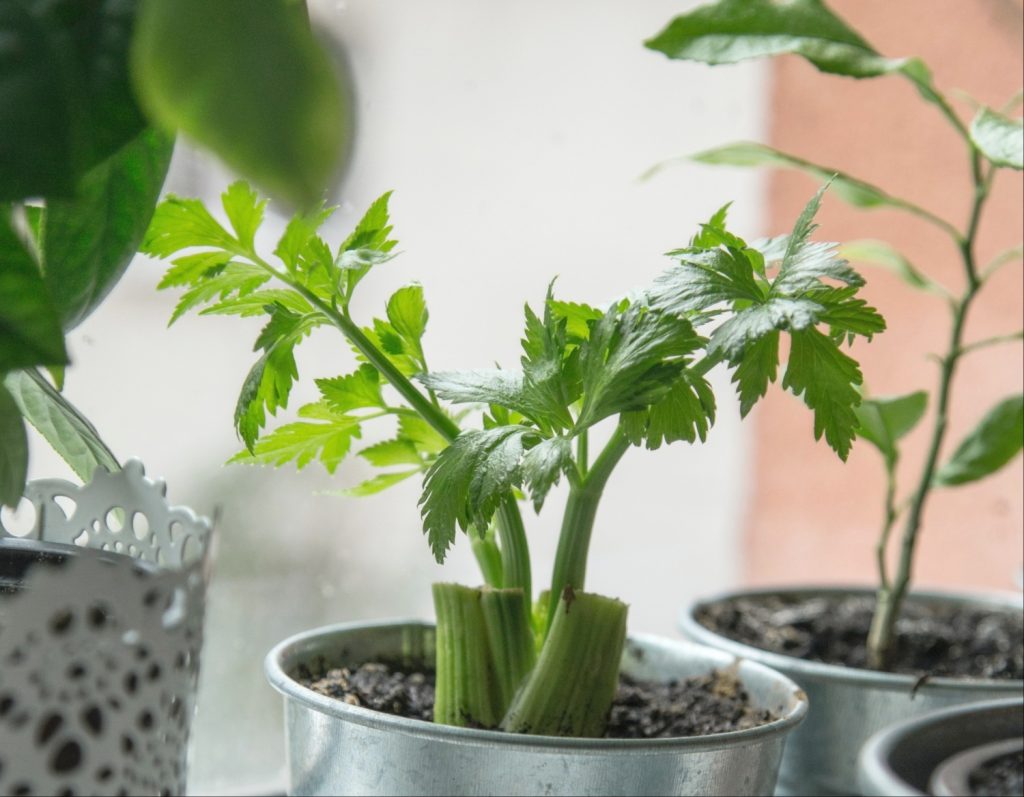
Beets
Beets are two for the price of one. You can eat the roots, and you can save the tops to use in salads or veggie side dishes. While beets are generally very cold tolerant, they do need some time to get adjusted to the cooler weather. Start your beets in their permanent pots about 6 weeks before the first frost of the season. This will allow them to mature enough to survive the cold temperatures.
Because beets are root vegetables, and sizeable ones at that, they need deep pots in order to grow well. Containers should be a minimum of 10 inches deep, but your beets will certainly appreciate deeper pots if you can find them. Beets need moist soil, but take care not to overwater them. Leaving them sitting in water promotes root rot.
Sow your beet seeds fairly deep at ¾-inch to 1-inch into the soil. Once they’ve sprouted, thin them out leaving 4 inches between plants (you can save the sprouts you culled to use in the kitchen!). Beets grow best when soil temperatures are at or above 50 degrees. Though it can take a while for the seeds to germinate, your beet crop will be ready to harvest in 50 to 75 days.
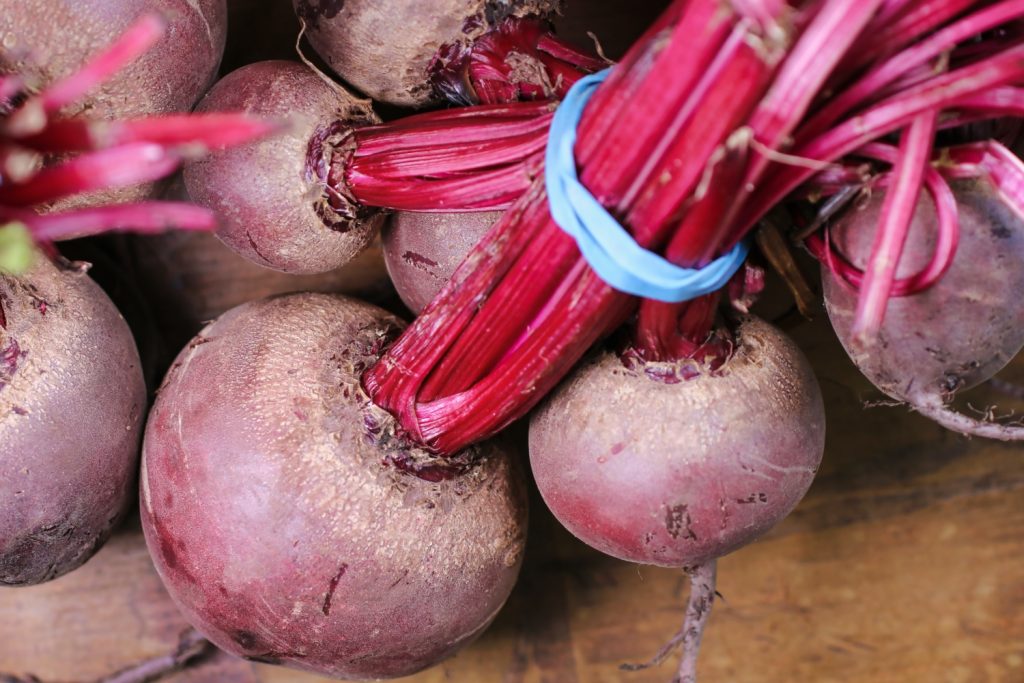
Collard greens
Leafy greens like collard greens are just perfect for winter gardens. The cooler temperatures make the leaves sweeter, and because collard greens mature in 50 to 75 days, you can harvest them quickly. Like spinach, trimming the leaves allows the plants to keep producing, so you can harvest even more leaves later.
Sow your collard green seedlings in their permanent pots ½-inch deep into the soil. You can thin them out once they’ve sprouted. A 1-gallon pot will hold a single collard green plant, but if you’re growing your greens in a long container, you can space them out 18 inches apart. Collard greens spread out quite a bit, so they need plenty of space for their leaves. These plants don’t require much attention, as long as you water them weekly, they should grow well without much fuss.
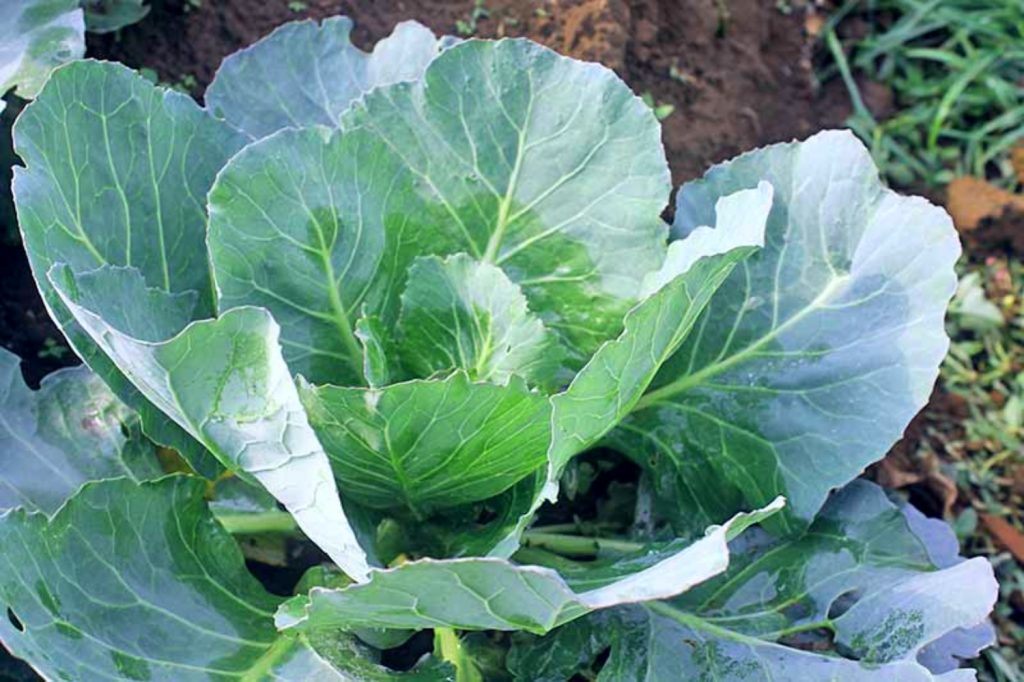
Bok choy
You can grow any bok choy in your winter container garden, but dwarf bok choy, or baby bok choy, is perfect for planting in small spaces. Bok choy grows best in cooler climates, so it’s an excellent choice for a fall or winter garden. As with other leafy greens, harvesting the leaves alone gives the plants time to regrow, so you have more to enjoy in the future.
Bok choy is ready in 35 to 60 days. Start your seedlings in their permanent pots to eliminate the possibility of transplant shock. Seeds should be sown at a depth of ½-inch. Thin seedlings, leaving 6 to 8 inches in between plants. If using long storage containers, you can plant several rows of bok choy. Space the rows about 10 inches apart, and stagger the plants to give them room to leaf out. Your baby bok choy plants are ready to be harvested when they’re 6-inches tall.
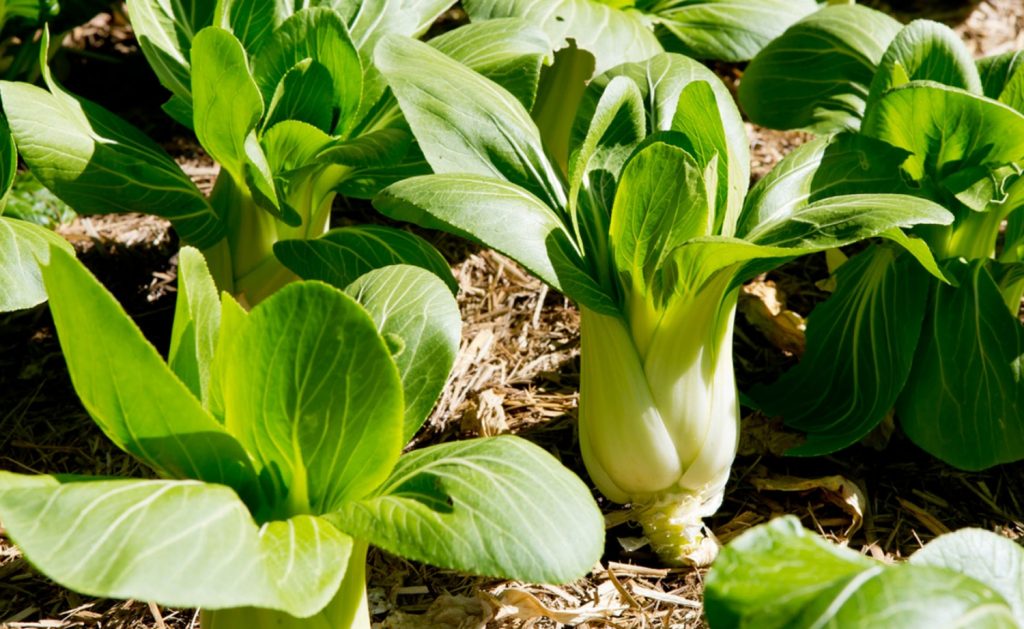
Potatoes
Carb-rich and loaded with beneficial nutrients, potatoes are a great veggie to plant in your winter garden, and they grow much better in pots than you might think. Start your potato slips indoors at the end of summer or the beginning of fall. Once the potatoes sprout roots and leaves, you can transfer them to their permanent growing containers. Be sure that the pots you use for your potatoes are deep enough — 15 inches should do the trick.
Because potatoes are moderate to heavy nutrient uses, be sure to amend their soil with plenty of compost. Plant the slips 2 to 3 inches deep in their pots. If you’re using long containers, you can grow more than one potato, just be sure to keep 12 inches in between plants. Potatoes thrive in all light conditions, and even though their tops may die off in a freeze, their roots will keep on growing.
You can harvest your potatoes once the plants’ foliage starts to turn yellow or once they start to flower. If your potato plants’ tops die back, you’ll have to keep track of how long they’ve been in the soil. Check your seed packet to determine when the potatoes should be ready. Most potatoes are large enough to be harvested 70 to 120 days after planting.
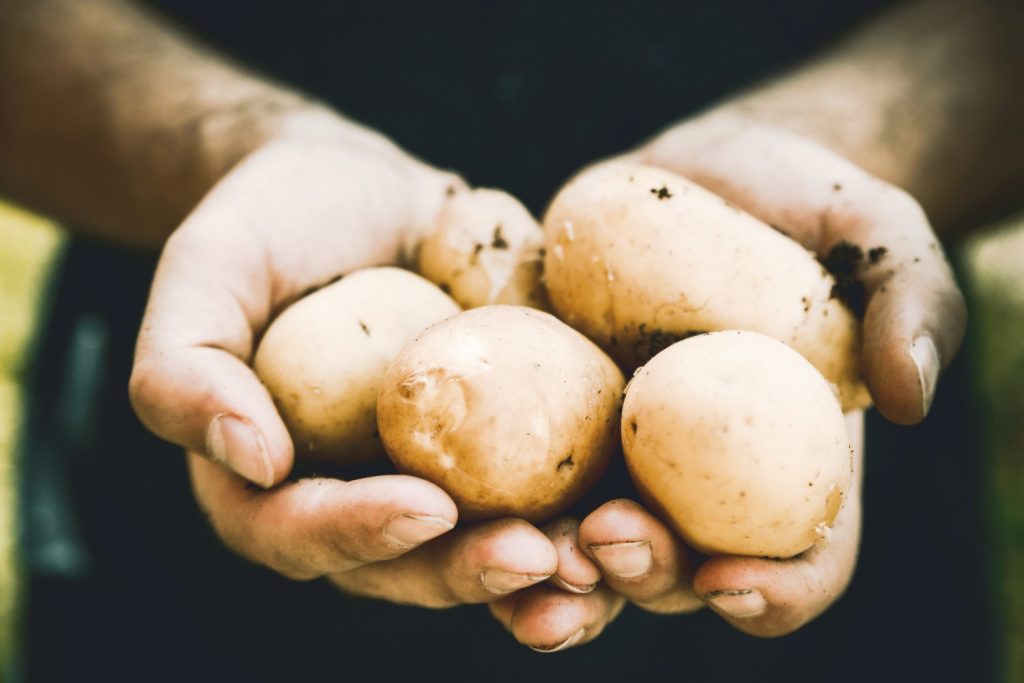
Tips for growing a successful winter garden
When starting seedlings for your winter garden, be sure to keep them in a warm, well-lit location. Keep the soil moist and transplant the seedlings carefully once they’ve developed a set of true leaves. Once they’re in their permanent pots, check the soil daily to ensure the plants stay hydrated. Moist soil takes more energy to stay warm in winter, so spread mulch or black plastic around the base of your plants to insulate them.
Overall, growing vegetables in pots in the winter isn’t much different than growing vegetables in pots during any other time of the year. By taking care of your plants’ basic needs and protecting them from the elements, you’ll be able to enjoy a harvest of fresh produce all winter long.
